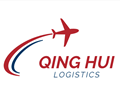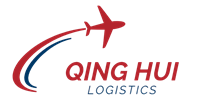
Clothing to Canada air transportation plan
- Time of issue:2025-07-29
Clothing to Canada air transportation plan
- Time of issue:2025-07-29
When planning air transportation for clothing to Canada, there are several crucial factors to consider, ensuring that the shipment arrives on time, safely, and in compliance with Canadian regulations. With the rise of e-commerce and global trade, air freight has become a popular method for transporting goods, including clothing, across long distances. In this article, we will outline the essential steps, challenges, and tips for planning a successful air transportation strategy for clothing to Canada.

Understanding the Air Freight Process
Air transportation involves moving goods via cargo flights from one location to another. In the context of shipping clothing to Canada, the process begins with packing and preparing the shipment. This includes ensuring that all items are appropriately labeled, documented, and ready for customs clearance. Once packed, the shipment is transported to the airport, where it is loaded onto a cargo plane. Upon arrival in Canada, the goods undergo customs inspection before being delivered to the final destination.
Choosing the Right Air Freight Service
When transporting clothing to Canada, it's essential to select the right air freight service. There are different types of services available, each with varying levels of speed, cost, and reliability. The most common options include:
1. Express Services: These are the fastest options, typically used for urgent shipments. Express air freight ensures that goods arrive in Canada within a short period, often within 1-3 days.
2. Standard Air Freight: This option is more affordable than express services and typically takes a few days longer. It is suitable for less time-sensitive shipments.
3. Charter Services: If you have a large volume of clothing or specialized requirements, chartering a dedicated flight may be an option. While this is more expensive, it offers full control over the shipping timeline.
Choosing the right service depends on factors such as budget, delivery urgency, and the nature of the clothing being shipped.
Packaging and Labeling Requirements
Proper packaging is critical to ensure the safety and protection of clothing during transit. Air freight conditions, such as high altitudes, pressure changes, and temperature fluctuations, can affect the condition of the goods. Clothing should be packed in durable materials that can withstand these conditions. Additionally, clothing items should be neatly folded or hung in appropriate containers to minimize wrinkling or damage.
Labeling is another crucial aspect of the air freight process. Each shipment must have clear and accurate labels, including information about the sender, recipient, and contents of the package. Labels should also comply with Canadian import regulations, which include specific requirements for customs declarations.
Customs and Import Regulations in Canada
Before your clothing shipment can enter Canada, it must clear Canadian customs. This process involves the submission of various documents, including a commercial invoice, packing list, and any necessary certificates of origin or compliance. Understanding and complying with Canadian import regulations is crucial to avoid delays and additional costs.
For clothing shipments, Canada has specific regulations that importers must follow. For example, clothing made from certain materials, such as wool or animal fur, may require additional permits. Furthermore, Canada imposes tariffs and taxes on imported goods, and these must be calculated and paid before the shipment can be cleared.
Managing Delivery and Distribution
Once the shipment clears customs, it is ready for delivery. Depending on the size and destination of the shipment, delivery can be managed via various methods, including direct air-to-door service or further transportation via ground logistics. Major cities like Toronto, Vancouver, and Montreal are well-connected to international airports, and distribution within these areas is relatively straightforward.
For larger shipments, you may need to partner with a local distribution center to facilitate the delivery of clothing to multiple retail outlets or customers across Canada. Efficient distribution networks can help reduce delivery time and ensure that products reach their final destinations in a timely manner.
Cost Considerations for Air Transportation
Air freight can be more expensive than other modes of transportation, such as sea freight or ground shipping. Therefore, it’s essential to consider the various cost factors involved in air transportation. These factors include:
- Weight and Size of the Shipment: Air freight rates are typically based on the weight and volume of the goods being shipped. Heavier or larger clothing shipments may incur higher costs.
- Distance and Flight Routes: The cost of air transportation also depends on the distance between the origin and destination, as well as the flight routes used.
- Urgency: Expedited services, such as express air freight, will naturally incur higher costs due to the speed of delivery.
To minimize costs, it’s important to carefully assess the best mode of transport and service level based on your specific needs. Additionally, consolidating smaller shipments into larger cargo loads can reduce overall transportation costs.
The Role of Technology in Air Freight
The modern air freight industry relies heavily on technology to streamline operations, enhance tracking, and improve communication between all parties involved. Many air freight providers offer online platforms where you can track your shipment in real time, ensuring that you stay informed throughout the journey.
Moreover, using automated systems for customs clearance and documentation helps reduce errors and speed up the process, making the overall air freight experience more efficient.
Conclusion
In summary, air transportation for clothing to Canada involves careful planning, understanding of customs regulations, selecting the appropriate air freight service, and managing the cost of shipping. Whether you are an e-commerce retailer looking to deliver clothing quickly or a business with a larger shipment, choosing the right service and handling the logistics efficiently is essential for a smooth and successful operation.
By focusing on packaging, labeling, customs compliance, and cost management, you can ensure that your clothing shipments reach Canada in a timely and secure manner. With the right strategies in place, air transportation can be a reliable and effective solution for moving clothing across borders.
ADDRESS: 101 Qinghui International, No. 160 Qisha Ferry Road, Shatian Town, Dongguan City, Guangdong Province
CONTACT NUMBER: 13620081619 / 18680404400
CONTACT PERSON: Shelly / Alan
E-mail: shelly@qhgj56.com
alan@qhgj56.com
Copyright © 2025 QH INTERNATIONAL LOGISTICS LIMITED

